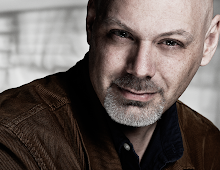I thought I'd just take a few minutes to explain what I did on that chunk of not-quite-a-table thing I posted about yesterday.
Basically, it started as a 4X8" chunk of styrofoam. I used a simple ball-point pen and a ruler to make the lines which created the grout between the floor tiles. I also used the ball-point pen to sketch in runes on the tiles; just freehand, but I may try something a little more neat-and-tidy for the final project. That "block" which is lying at a semi-angle on the floor, surrounded by sand, was just another piece of styrofoam with chunks torn off of it. I also used a phillips-head screwdriver to make the diamond-shaped "holes" located at the corner of every tile. I did a little bit with the pen first, so it's a bit screwed up, but the final is going to be cleaner (and that's what the "test balloon" is for, right?).
The paint scheme for the tiles was black, drybrushed up to shadow grey, then up to bleached bone, then to white. As you can see, the drybrushing makes the otherwise near-invisible runes and spaces between the tiles pop out and look amazingly real. I went really heavy on the bleached bone because I wanted those tiles to look as though they had years and years of sand dust settling on them.
The sand was a little trickier, but not much. I glued a few popsicle sticks down to create a gentle slope, and then slathered some drywall compound down to make it smooth. This is the first time I'd ever worked with the stuff, so I was pretty interested to see how it would work out, and I really liked it. My usual glue and sand treatment worked pretty nicely (glue, then sand, then watered-down glue, then sand, then watered-down glue), and the paint scheme was the usual snakebite leather, bubonic brown, bleached bone, then white.
The most impressive aspect of creating this mini-table would have to be how simple and easy it was. No screwy, weird materials. No particularly tricky techniques or advanced skills necessary. Very inexpensive. Quick to make. This is what I like to know; it'll help me to stay motivated when I have to do it on 4X8 feet instead of inches.
Things I'll do differently on the final:
- Will be careful not to leave so many stray marks that will pop out when the drybrushing happens. If you look at the photos you'll likely see little circular marks near the edges. That was just from being sloppy.
- I'll let the drywall compound dry more completely before I start putting anything on top of it. I was just excited to see how it was going to look.
- I'll let the sand dry more completely before I start putting paint on it. Same reason.
- I'll let the paint dry more completely before I drybrush. You get the idea.
- I may paint all at once instead of in stages. When I did this table, I completed the tiles first, paint and all, and then added the sand dune and painted it. I'm not sure yet if that was the way to go or not.
Now, that "stone" which is half-buried in sand is actually not going to appear on the table as it is. I had something else far more complicated in mind. You see, I am going to build four Aspect shrines out of foam and I want to create the illusion that they're half-buried in sand from years of disuse. I don't, however, want the shrines stuck in place so that they can't be moved. What I intend to do, then, is to create four "foundations" for shrines and make them a permanent part of the table, and later the shrines can be just plopped on top of them (and they'll be painted to appear as if the foundation and the shrine are one piece). The foundation will be swamped with sand, and so the shrine will appear to be half-buried, but the part which is not buried will actually be removable. The only problem I am worried about is that the shrine and the foundation have to match in paint hue and tone, which is hard to do if you aren't painting them as a single unit. I don't believe it will look too bad, actually, but it's worth keeping in mind.
More pics to come.
12/11/2005
Subscribe to:
Post Comments (Atom)

No comments:
Post a Comment